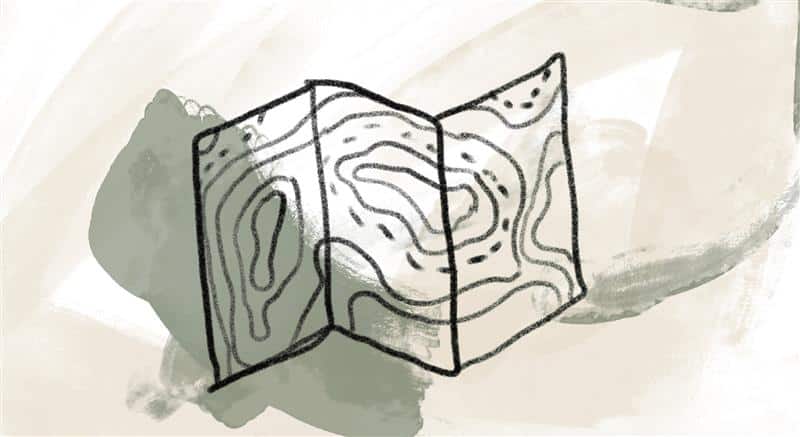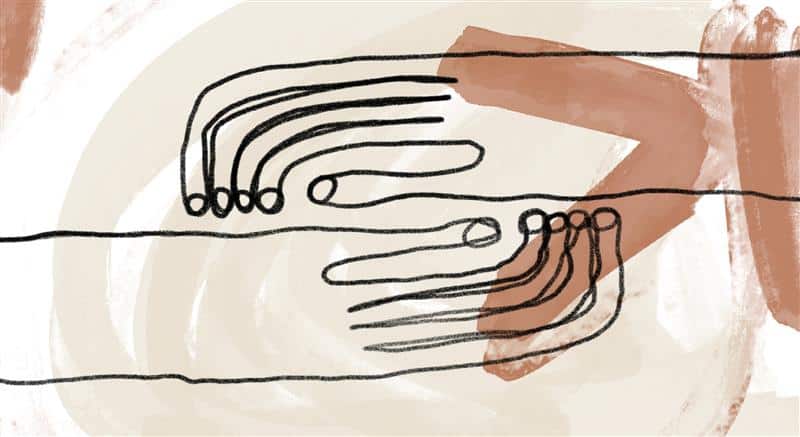
The apostle Paul teaches that the resurrection confirms what the incarnation anticipates—Christ is another name for every thing. Father Richard writes:
The core message of the incarnation of God in Jesus is that the Divine Presence is here, in us and in all of creation, and not only “over there” in some far-off realm. The early Christians came to call this seemingly new and available Presence “both Lord and Christ” (Acts 2:36).
Read 1 Corinthians 15:3–8, where Paul describes how Christ appeared a number of times to his apostles and followers after Jesus’ death. The four Gospels do the same thing, describing how the Risen Christ transcended doors, walls, spaces, water, air, and times, eating food, and sometimes even bilocating, but always interacting with matter. While all of these accounts ascribe a kind of physical presence to Christ, it always seems to be a different kind of embodiment. Or, as Mark says right at the end of his Gospel, “he showed himself but under another form” (16:12). This is a new kind of presence, a new kind of embodiment, and a new kind of godliness.
This, I think, is why the people who witnessed these apparitions of Christ seemed to finally recognize him, but not usually immediately. Seeing and recognizing are not the same thing. And isn’t this how it happens in our own lives? First we see a candle flame, then a moment later it “blazes” for us when we allow it to hold a personal meaning or message. We see a homeless person, and the moment we allow our heart space to open toward them, they become human, dear, or even Christ. Every resurrection story seems to strongly affirm an ambiguous—yet certain—presence in very ordinary settings, like walking on the road to Emmaus with a stranger, roasting fish on the beach, or one who appeared like a gardener to the Magdalene. [1] These moments from Scripture set a stage of expectation and desire that God’s presence can be seen in the ordinary and the material, and we do not have to wait for supernatural apparitions. We Catholics call this a sacramental theology, where the visible and tactile are the primary doorway to the invisible. This is why each of the formal Sacraments of the church insists on a material element like water, oil, bread, wine, the laying on of hands, or the absolute physicality of marriage itself.
Christ is the light that allows people to see things in their fullness. The precise and intended effect of such a light is to see Christ everywhere else. In fact, that is my only definition of a true Christian. A mature Christian sees Christ in everything and everyone else. That is a definition that will never fail us, always demand more of us, and give us no reasons to fight, exclude, or reject anyone.
References:
[1] See resurrection accounts in Luke 24:13–35, John 21:1–14, and John 20:14–18.
Adapted from Richard Rohr, The Universal Christ: How a Forgotten Reality Can Change Everything We See, Hope for, and Believe (New York: Convergent, 2021), 29–30, 33.
Image credit: A path from one week to the next—Jenna Keiper, Photo of a beloved artpiece belonging to Richard Rohr (Artist Unknown.) McEl Chevrier, Untitled. CAC Staff, Untitled. Used with permission. Click here to enlarge image.
On retreat, the CAC staff used watercolors to connect to our collective grief. This is one of the watercolor paintings that came from that exercise.
Story from Our Community:
The church I grew up in was like a dying restaurant—no one wanted to eat our food. It didn’t taste good! Richard Rohr’s The Universal Christ is full of genuinely good news. My reaction has been a lot of tears—both of relief and gratitude. Hiking through the Sangre de Cristo Mountains listening to the audiobook, I am leaving so many hurtful, abusive ideas of God behind me. I knew God was bigger than any church, but now I actually feel it. I am seeing Christ in the wrist of a tree branch, the face of a fellow hiker, a dog running down the path. Now the poet’s words actually make sense! “For Christ plays in ten thousand places, Lovely in limbs, and lovely in eyes not his.” Thank you! —Meghan D.




